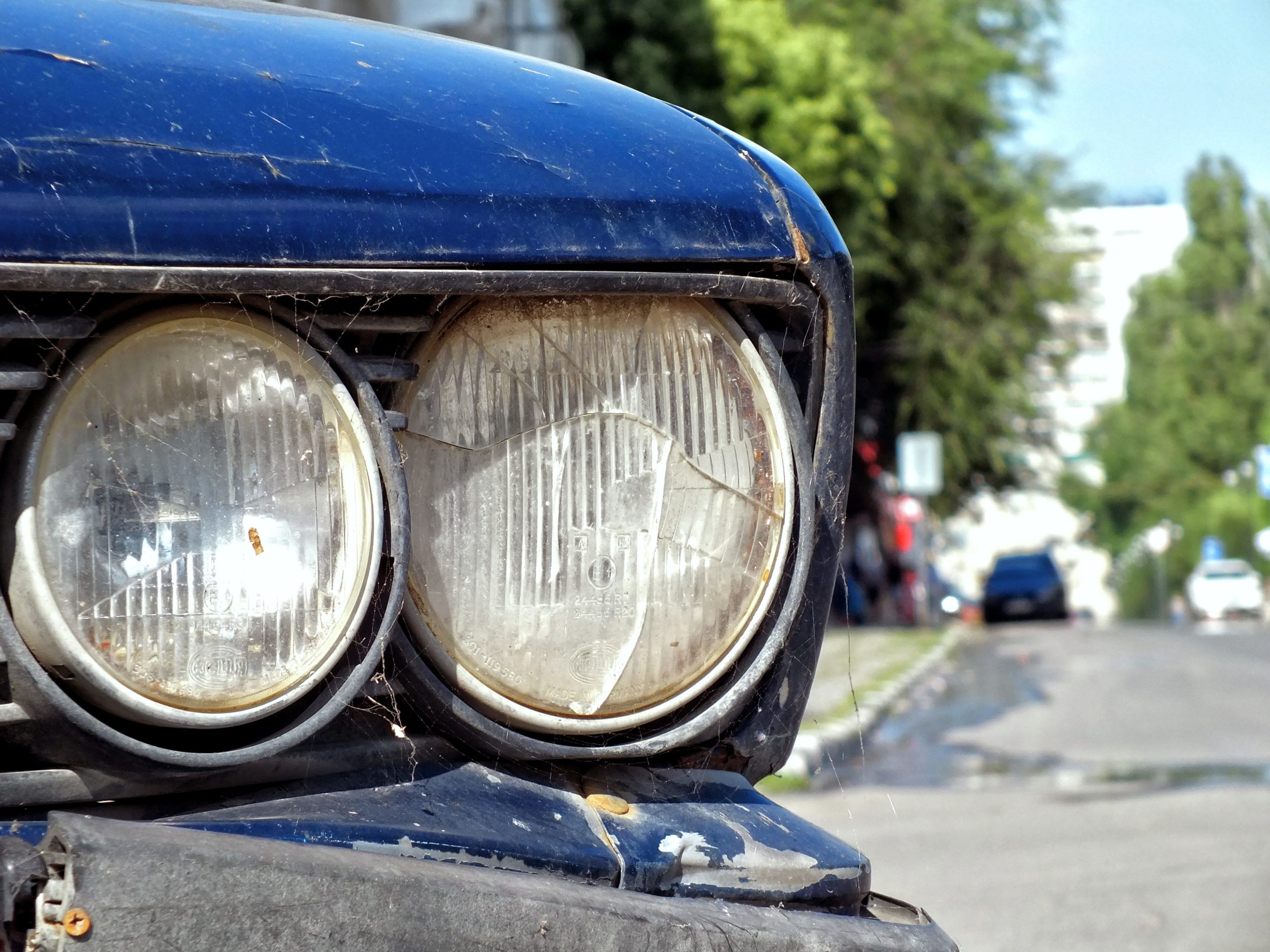If you’ve had a headlight bulb burn out, you probably asked yourself, how long do headlight bulbs last? It’s good to know if your bulbs are lasting longer or shorter than expected.
Well, that depends on a number of factors, including the type of headlight bulb you have installed, the conditions you drive in, and how well you take care of them.
How Long do Headlights Last, By Bulb Type:
| Bulb Type | Expected Lifespan |
| Halogen | 450 – 1,000 hours |
| LED | 50,000 – 80,000 hours |
| HID | 12,000 hours |
How Long do Halogen Headlight Bulbs Last?
The most common type of headlight is the halogen bulb, which generally has a lifespan between 450 and 1000 hours. This means that if you drive at night regularly, your headlights should last around two to four years.
Another factor affecting headlight lifespans is the wattage of your bulb. Bulbs with higher wattage can create more light but also generate more heat, leading to shorter life spans than those with lower wattage. For example, an H11 bulb has a wattage of 55W while an H11B has a wattage of 65W – this could lead to noticeable differences in lifespan between these two types of bulbs.
To ensure optimal performance over time it’s important to replace your bulbs every three years or so regardless of their condition – this will help prevent against premature dimming or flickering caused by degraded filament wiring or other internal issues. You’ll also want to check for wear and tear regularly; if you notice black spots on the lens or discoloration on the reflectors then it’s probably time for replacement.
Finally, keep in mind that weather conditions can also play an important role in how long your headlights last: cold temperatures put extra strain on electrical components while excessive heat can damage both filaments and lenses over time. Make sure to park your car under cover during summer months and use proper protective coverings during winter months in order to extend the life of your headlight fixtures as much as possible.
What Causes Halogen Headlight Bulbs to Fail?
Halogen bulbs usually fail because the filament inside the bulb has burned out. This can be caused by a number of things, such as a short in the wiring, old age, or accidental damage.
How Long do LED Headlight Bulbs Last?
LED headlight bulbs last for an impressive 50,000 to 80,000 hours on average, depending on the quality and type of bulb. This means that if you use them in your car for 8 hours a day, they should last between 10.7 and 17 years!
The longevity of LED headlight bulbs is due to their highly efficient design that requires very little power to operate while emitting bright beams of light.
Additionally, LED bulbs are not prone to overheating like halogen or HID bulbs since they produce much less heat overall. As such, LED headlights can be used in all types of climates without fear of overheating or malfunctioning prematurely.
Furthermore, LED headlights also have greater durability than other types of bulbs as they are not vulnerable to damage from shock or vibration. Therefore, you can expect your LED headlights to last for many years with minimal maintenance and care involved.
How Long do HID Headlight Bulbs Last?
HID (High Intensity Discharge) headlight bulbs have an impressive lifespan, with many models boasting up to 12,000 hours of light.
In comparison to traditional halogen bulbs, HIDs can last up to eight times longer, providing motorists with brighter and clearer visibility for longer.
HID headlights are known for their durability and resistance to shock or vibration; under normal circumstances, they may even last the life of a vehicle without needing any kind of maintenance or replacement. With proper care and attention, HID headlight bulbs can provide crystal-clear visibility for up to 10 years or more.
To ensure maximum performance and longevity, it’s important to regularly check the headlights for signs of damage or corrosion due to exposure to extreme temperatures or moisture.
Additionally, it’s recommended that you keep them clean by wiping off dust or dirt whenever it accumulates. With these simple tasks, you can enjoy the benefits of HIDs for many more years beyond their average lifespan.
What Factors Affect Headlight Lifespan?
Headlight lifespan is affected by many different factors, including both environmental and auto-related issues.
- Weather conditions can play a major role in headlight longevity. Extreme temperatures, high humidity levels, and frequent exposure to road salt can all cause headlights to deteriorate faster than usual.
- In addition, the type of headlight being used also affects its lifespan. Halogen headlights typically have the shortest lifespans due to their lack of resistance against heat and moisture, while LED and HID lights last much longer due to their more durable materials.
- Other related factors that affect headlight longevity are how often they are used as well as the quality of bulbs being used. Frequently turning on headlights when it’s not necessary or using low-grade bulbs can decrease their lifespan drastically. Drivers should make sure their headlights are always properly maintained with regularly scheduled cleanings and inspections for any signs of wear or damage. By doing so, drivers can help ensure that their headlights remain in good condition for as long as possible.
- Finally, age is another important factor when determining a headlight’s lifespan; older vehicles’ headlights tend to degrade quicker than newer models since they don’t have the safety features or advanced designs available on modern cars.
- Additionally, it’s recommended that drivers replace headlights every 3-5 years, depending on what type of vehicle they have and how often they use them.
By keeping these factors in mind and taking proper care of their car’s lighting system, drivers can extend the life of their car’s headlights significantly and keep themselves safe while driving at night.
How to Make Headlight Bulbs Last Longer
Headlight bulbs are designed to provide drivers with a clear line of sight by producing a bright and consistent light. However, like any other vehicle component, headlight bulbs need regular maintenance and replacement in order to keep them functioning properly. Fortunately, there are some easy steps drivers can take to make sure their headlight bulbs last longer.
- The first step is to ensure the vehicle has been regularly serviced. During service, mechanics will check the condition of the bulbs and replace them if necessary. It is also important to replace any lenses that have become cracked or pitted which can limit the amount of light produced by the bulb.
- In addition, using high-quality bulbs will help make them last longer. Many companies produce “heavy duty” or “long life” headlight bulbs specifically designed for extended use and durability. The benefit of these higher-end headlights is that they often feature advanced coatings which protect them from solar UV rays, heat, vibrations and other wear factors.
- Finally, applying a protective sealant will block out UV rays while preserving clarity in the lens coverings so that they don’t cloud up over time due to dirt accumulation and lens oxidation.
By following these simple steps, drivers can make sure their headlight bulbs stay bright and efficient for many miles down the road.
How Often Do Headlights Need to be Replaced?
The exact amount of time that passes between replacements will vary depending on the type of headlights you have, their age, and the frequency with which you use them.
Generally speaking, it is recommended that standard halogen headlights be replaced every two years or so. Xenon HID/LED headlights may last up to five years or even longer in some cases.
It’s important to keep in mind that headlights can dim over time due to wear and tear caused by driving, weather conditions, and other factors.
To ensure your car remains safe to drive at night, it’s important to inspect your headlights regularly and replace them when necessary. If you find yourself frequently replacing your headlights due to dimness or other issues, then consider upgrading to a different type of bulb such as LED or HID which tend to have much longer lifespans than halogen bulbs.
Additionally, be sure to keep your car clean as dirt and debris can affect the performance of your headlights.
Signs that Your Headlights Need to be Replaced
The most obvious sign that headlight bulbs should be replaced is when they start to dim or flicker while driving. This can indicate the bulbs are reaching the end of their lifespan and are no longer producing enough light for safe night-time driving. Other signs may include a yellowing of the lenses, condensation in the headlight casing, or an indicator light on your dashboard.
It’s important to regularly check your headlight bulbs for signs of wear and tear. The lifespan of a typical halogen bulb is usually around 500 hours, whereas LED lights can have a much longer lifespan – up to 15,000 hours or more. If you notice any of these signs, it’s important to replace your headlights as soon as possible for optimal safety on the road at night.
To ensure optimal road safety conditions, it’s recommended to carry out regular maintenance checks on your car’s headlights and replace them when necessary. Without doing so, you could be compromising visibility during night-time driving which could lead to an increased risk of accidents or collisions with other vehicles or objects.
Additionally, dull lighting caused by worn-out bulbs can also be off-putting to other drivers which can lead to misunderstandings on the road and further potential risks.
How to Replace a Headlight Bulb
Replacing a headlight bulb is a fairly straightforward process that can help you keep your car looking and running its best. Before replacing the headlight bulb, be sure to check your owner’s manual for specific instructions regarding the type of bulb needed and any safety precautions.
The first step is to open the hood of the vehicle and locate the housing for the headlight assembly. Once this has been identified, use a screwdriver or appropriate tool to loosen and remove any screws or clips that may be holding it in place. Carefully remove the headlight assembly from the vehicle, being careful not to touch any of the components inside.
The next step is to remove and replace the old bulb with a new one. Depending on which type of bulb needs replacement, you may have to twist off a plastic cover before removing the old bulb by hand. Be sure to take note of how each part is connected so that everything can be put back together properly. Once you have replaced the bulb, reverse all steps previously taken when reassembling the housing unit onto your car.
Finally, once you have reinstalled the headlight assembly, turn on your headlights to ensure they are functioning properly before going anywhere with your vehicle. For best results, replace both headlights at once in order to avoid discrepancies between light brightness levels from one side of your car to another and prolong their life expectancy overall. With some patience and attention-to-detail, replacing a headlight bulb can be an easy task that helps keep you safe while out on roads at night.
Final Word
In conclusion, there are many factors that influence how long do headlights last – from type and wattage of bulb used to maintenance habits and ambient temperature levels – but with proper care they should be able to provide reliable service for around two to four years (or even longer if LED/HID models are used). Be sure to replace them regularly for optimal performance and safety when driving in low-light conditions.




